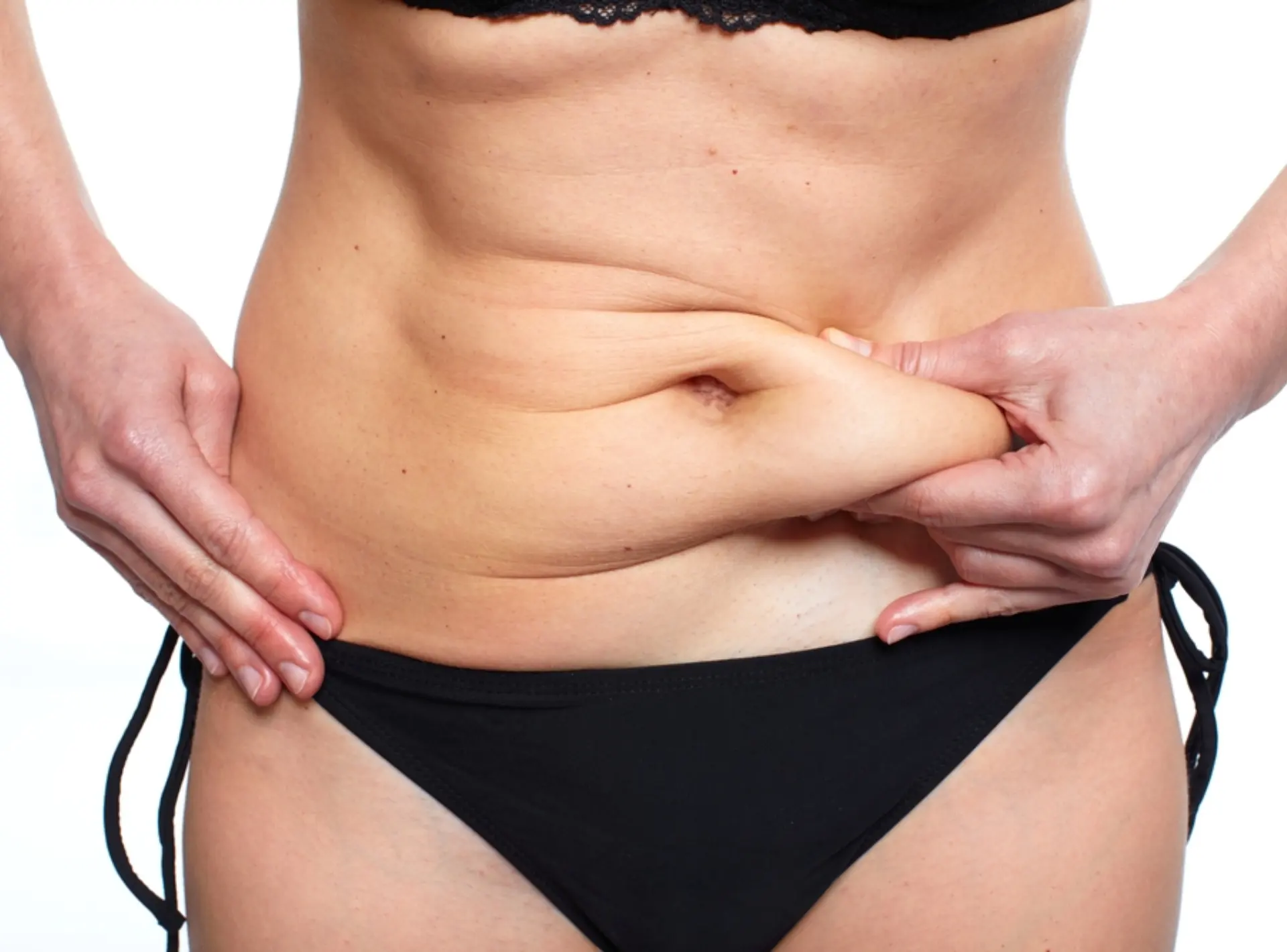When it comes to a tummy tuck, I frequently explain to patients that the procedure is not a single surgical step but rather a series of elements that can be combined to create customized results.
The goal of a tummy tuck is to create sleeker contours by treating a variety of conditions that prevent the abdomen from appearing toned, whereas liposuction only aims to remove unwanted fat cells from the body, such as those that cause a noticeable bulge at the belly.
Tummy Tuck In Dubai
A tummy tuck in Dubai is one of the most common cosmetic procedures for people seeking a toned and youthful abdominal contour. Thanks to its cutting-edge medical facilities, highly skilled surgeons, and top-notch safety standards, the city has emerged as a global center for aesthetic procedures, drawing patients from all over the world. Depending on the body type and objectives of each patient, Perfect Doctors Clinic provides a variety of abdominoplasty options, including full, mini, and extended stomach tucks. Modern anesthesia techniques and scar-minimizing incisions are examples of advanced techniques that guarantee patient comfort and a quicker recovery. From consultation to recovery, you can anticipate a smooth experience thanks to the city’s dedication to luxury and quality.
Excess Fat
Naturally, one of the most obvious causes of a wider waist is obstinate fat deposits. Although liposuction is commonly done alone, it can also be used to help flatten the area as part of a tummy tuck. Almost everything is done for this component as it would be for a solo lipo procedure: A cannula is used to loosen the fat and suction it out. The incision made for a tummy tuck gives the surgeon access, whereas liposuction necessitates tiny incisions that are subsequently sutured shut.
Excess Skin
Extra skin produces a sagging pouch that can conceal even well-defined abdominal muscles that sit underneath, while excess fat results in bulges. There can be a small to large amount of extra tissue (sometimes called an “apron”). The surgeon basically re-drapes the abdominal skin to make it sit tight and flat, then trims off any excess for a tummy tuck. This element’s incision and sutures are usually concealed lower on the torso, where they may be concealed by underwear or the bottom of a swimsuit.
BOOK AN APPOINTMENT TODAY
Lax Muscles
Belly muscles and the fascia that surrounds them may loosen with time. Lax fascia permits the contents behind to protrude outward, while firm fascia holds everything in place, akin to interlaced fingers preventing a water balloon from bulging outward. The entire midsection may appear flabby due to the separation of abdominal muscles. If necessary, a surgeon can sew these muscles and fascia back together during a tummy tuck to make everything toned and taut. In certain instances, such as a mini-tummy tuck, this technique could be the main component of the process. Moms with a tiny bulge beneath their belly button frequently choose it.
Belly Button Placement
To keep the navel proportionate to the rest of the body, the surgeon may need to “relocate” the belly button, which entails making a hole in the newly taut abdominal skin. This will depend on the specifics of the tummy tuck. We refer to this procedure as “umbilical translocation.”
Although these are the typical components of a stomach tuck, I also add other components to create what I call the NaturaTuck™. Using what are called progressive tension sutures to attach the underlying muscle to the abdominal wall is a key part of this. In essence, this surgical procedure divides the space into compartments, preventing any open areas where fluid could accumulate and result in swelling or the need for drainage. When I combine this method with surgical glue, I’ve found that most patients don’t require drains after surgery.
The body can then be further sculpted to promote an hourglass figure by forming an “internal corset.” I’ve taken measurements that demonstrate how the work at this point has improved the waistline and narrowed it.
After everything is finished, the incision will be sealed with absorbable sutures or a special glue, allowing the patient to shower the following day without having to take the sutures out. After surgery, lasers can be used to speed up scar healing. Additionally, Exparel injections reduce pain for patients by numbing the abdomen for two days.
Every tummy tuck is a different procedure because each patient has a different body size and shape as well as personal preferences for the final appearance. Although all of these surgeries have certain similarities, no two will be precisely the same.
How You Get Ready
You talk to an esthetician about getting a tummy tuck. Most likely, your plastic surgeon will do the following at your first visit:
- Review your medical history: You should be ready to talk about your current and past health problems. Talk about any medicines you’re taking or have taken recently. Talk about any surgeries you’ve had as well.
You should let the plastic surgeon know if you are allergic to any medicines. If you want to lose weight and get a tummy tuck, you should talk to the plastic surgeon about that. Most likely, the surgeon will ask you many questions about how you gained and lost weight.
- Do a physical exam: The plastic surgeon looks at your abdomen to help you decide what to do. The doctor may also take pictures of your stomach for your medical records.
- Ask about your goal: Tell them why you want a tummy tuck and how you want to look afterward. Check to see what the pros and cons of the surgery are, including any scarring. Remember that having had abdominal surgery before might make the results less positive.
You may also need to do the following before getting a tummy tuck:
- Stop smoking: Smoking cuts off blood flow to the skin, which can make it take longer to heal. Tissue damage is also more likely to happen if you smoke. If you smoke, talk to your plastic surgeon about how long you should not smoke before and after surgery.
- Not take certain medicine: Most likely, they will tell you not to take aspirin, painkillers, or herbal supplements. These can make bleeding worse.
- Stay at a stable weight: Before getting a tummy tuck, you should try to keep your weight stable for at least 5 to 10 months. Most likely, your plastic surgeon will tell you to lose weight before the surgery if you are very overweight. The results may be different if you lose a lot of weight after the surgery.
- Arrange for Help during recovery: Plan for someone to drive you to and from surgery. They should stay with you at home at least the first night while you heal.
MEET THE EXPERT DOCTOR
What You Can Expect
Many times, a tummy tuck is done in a hospital or surgery center.
During
Your surgery team will give you painkillers before and during the tummy tuck. Usually, you are given drugs that are called general anesthetics. These take away your pain and make you feel sleepy.
There are different ways for plastic surgeons to do a tummy tuck. The best method for you will depend on your goals and how much you want things to change.
Most of the skin and fat between the belly button and pubic hair is cut away during a standard tummy tuck. Long-lasting stitches are used to tighten the fascia, which is a type of connective tissue that lies on top of the abdominal muscles.
The shape and length of the cuts depend on how much extra skin was removed and what kind of tummy tuck you had. The cut above the pubic hair is sewn back together. There is a scar that runs along the natural fold in the swimsuit line.
What the plastic surgeon does is also move the skin around the belly button. A small cut is used to pull the belly button out, and it is then stitched back into place.
You might be given an antibiotic to keep you from getting an infection during the surgery.
After
Most likely, the people who did your surgery will put surgical dressing over the cuts on your stomach and belly button after the surgery. Along the cut, small tubes could be put in to drain any extra blood or fluid.
The people who did your surgery will help you walk as early as the day after. If you move around, you’re less likely to get a blood clot.
Most likely, painkillers will be given to you. It’s normal for the area where surgery was done to swell up.
After surgery, drains may stay in place for a few days. Someone from the surgery team shows you how to empty the drains and take care of them. As long as the drains are in place, you may need to continue taking antibiotics.
After your tummy tuck, your doctor may also give you a blood-thinning drug to take for a short time.
An abdominal binder is a piece of clothing that you might wear for 5 to 7 weeks after your tummy tuck. This keeps fluid from building up and supports your stomach while you heal. The people who did your surgery will tell you how to take care of your scar.
You may need to be careful when moving around for the first five weeks after getting a tummy tuck. Try not to lift heavy objects, strain, or do other difficult things. Furthermore, try not to move in ways that put stress on the wound, like bending over quickly at the waist. Straining the wound could worsen it. After surgery, don’t play any sports for at least seven weeks.
Many people who get tummy tucks can go back to work in three and a half weeks. But the exact time will depend on how active your job is.
Most likely, you’ll need to see your plastic surgeon regularly for follow-up care. Please inquire about the frequency of your follow-up appointments with the doctor.
Best Plastic Surgeon In Dubai For Tummy Tuck
Best Plastic Surgeon in Dubai for tummy tuck is available at Perfect Doctors Clinic, which ensures that every patient receives a treatment plan customized to their specific body shape and goals by fusing technical proficiency with aesthetic vision. For instance, the surgeons at Perfect Doctors Clinic have a great deal of experience doing full and mini tummy tucks using state-of-the-art methods that minimize downtime and scarring. Examine a surgeon’s qualifications, patient endorsements, before-and-after pictures, and general philosophy of patient care before selecting one. From your initial consultation through your recuperation, the top plastic surgeons in the clinic prioritize safety, accuracy, and natural results while creating a welcoming and encouraging environment.
















































